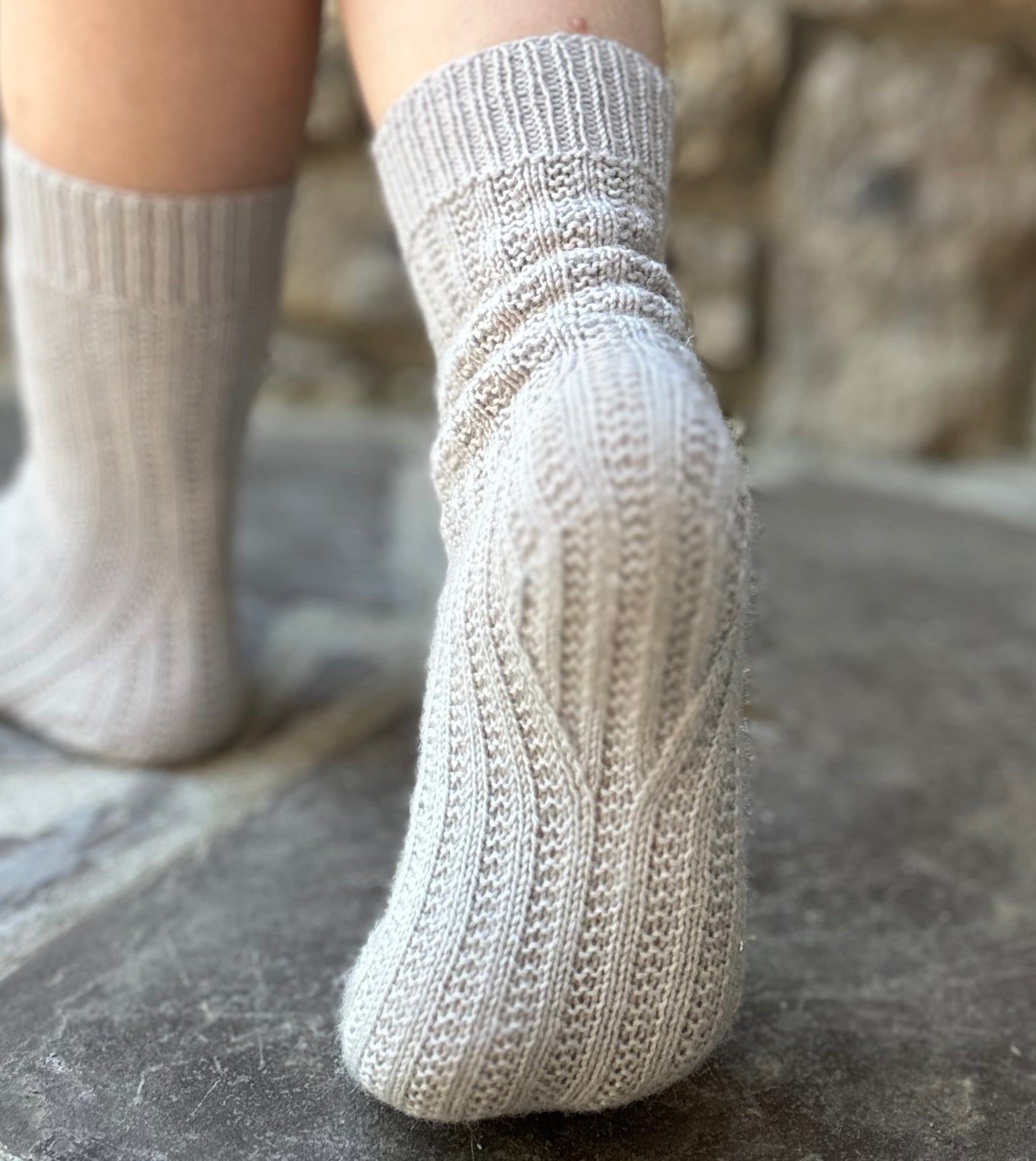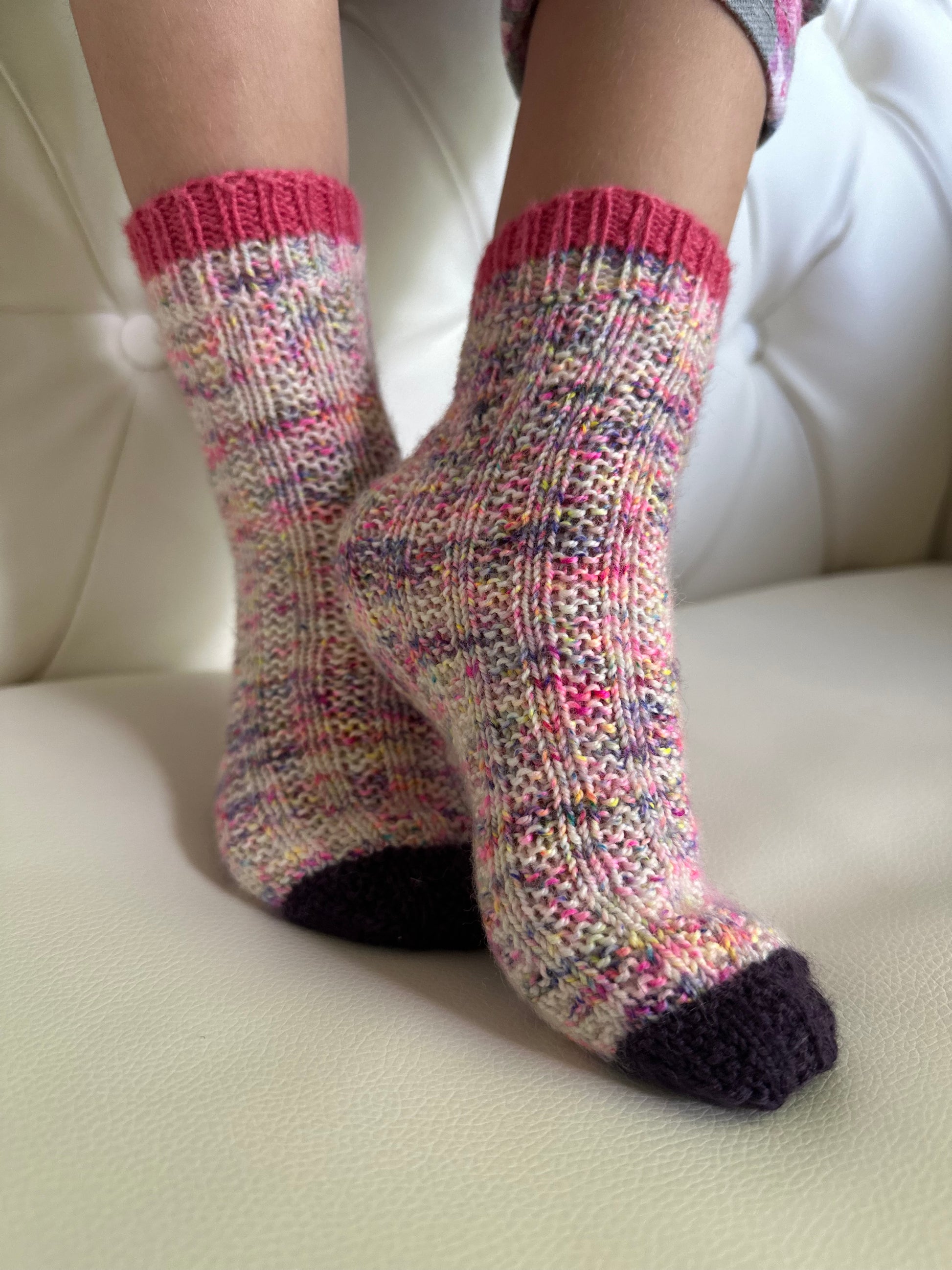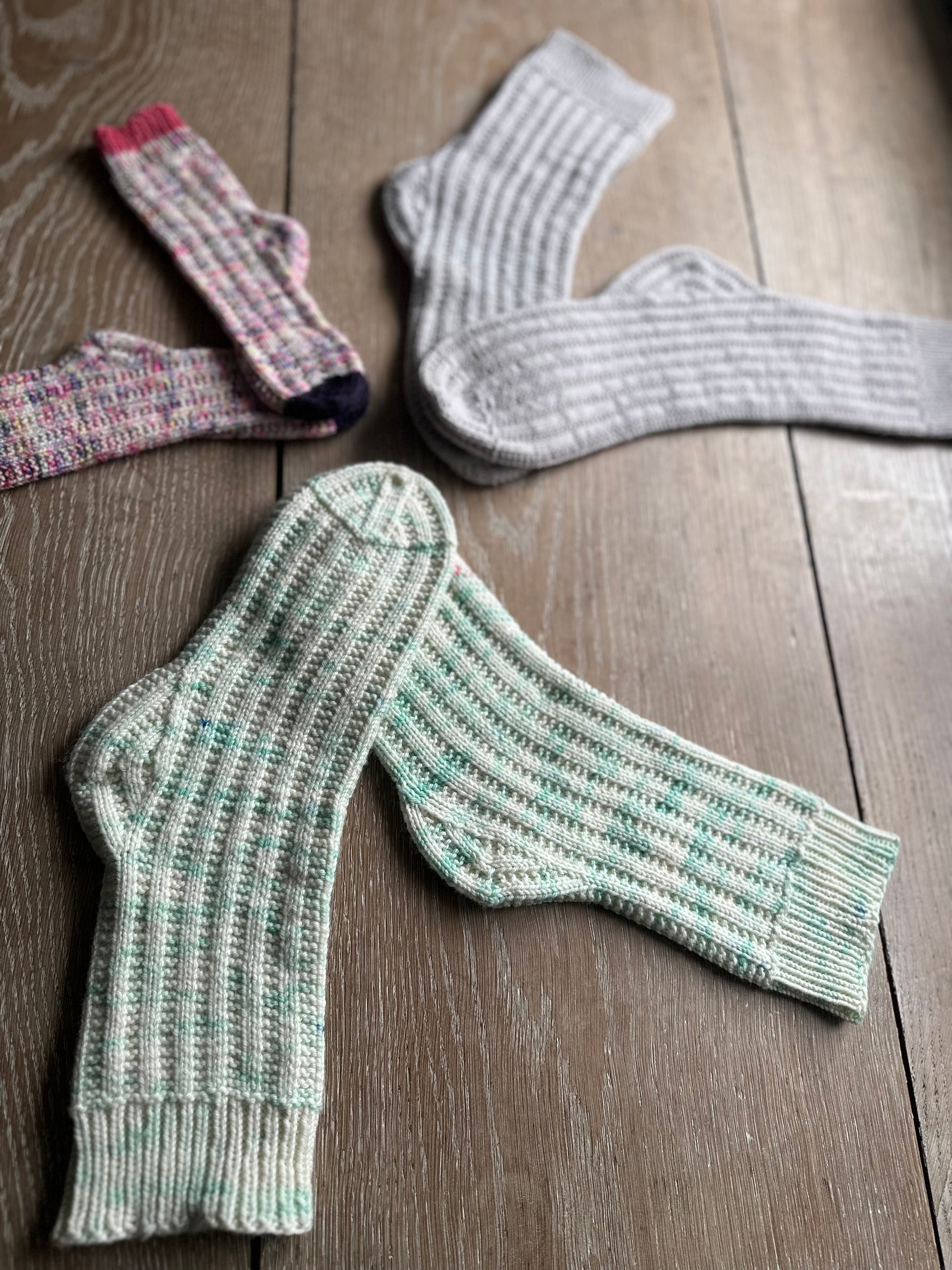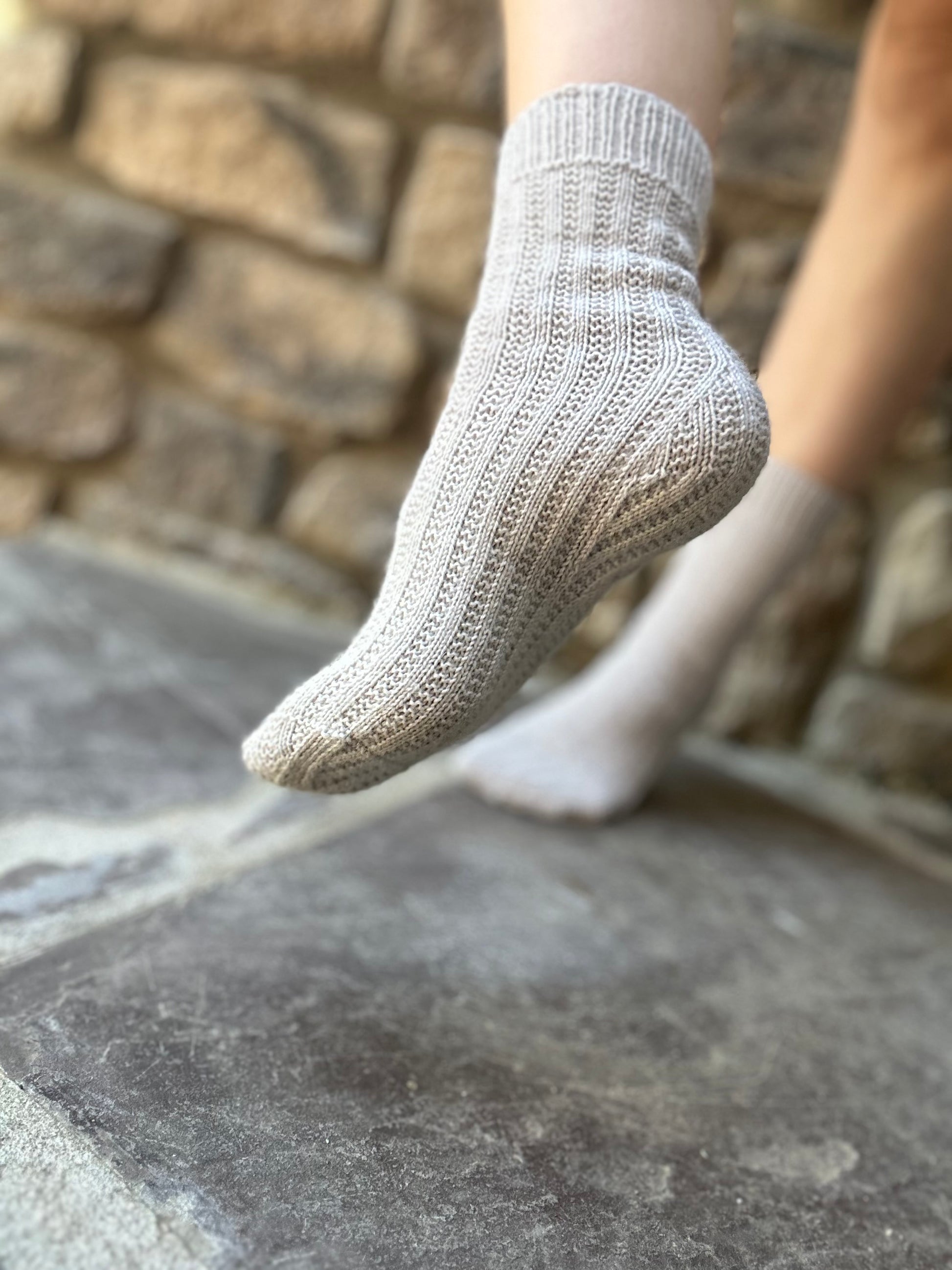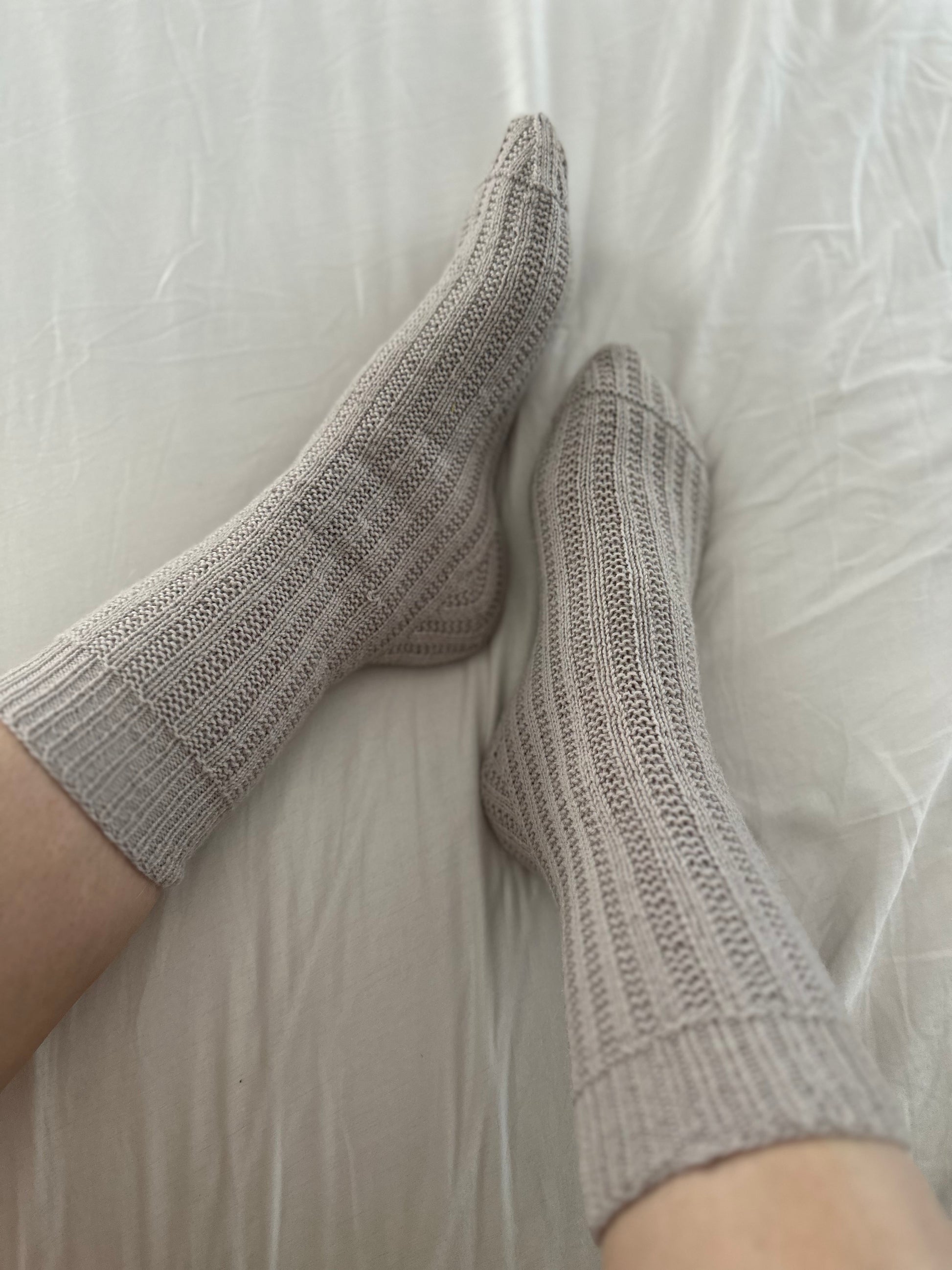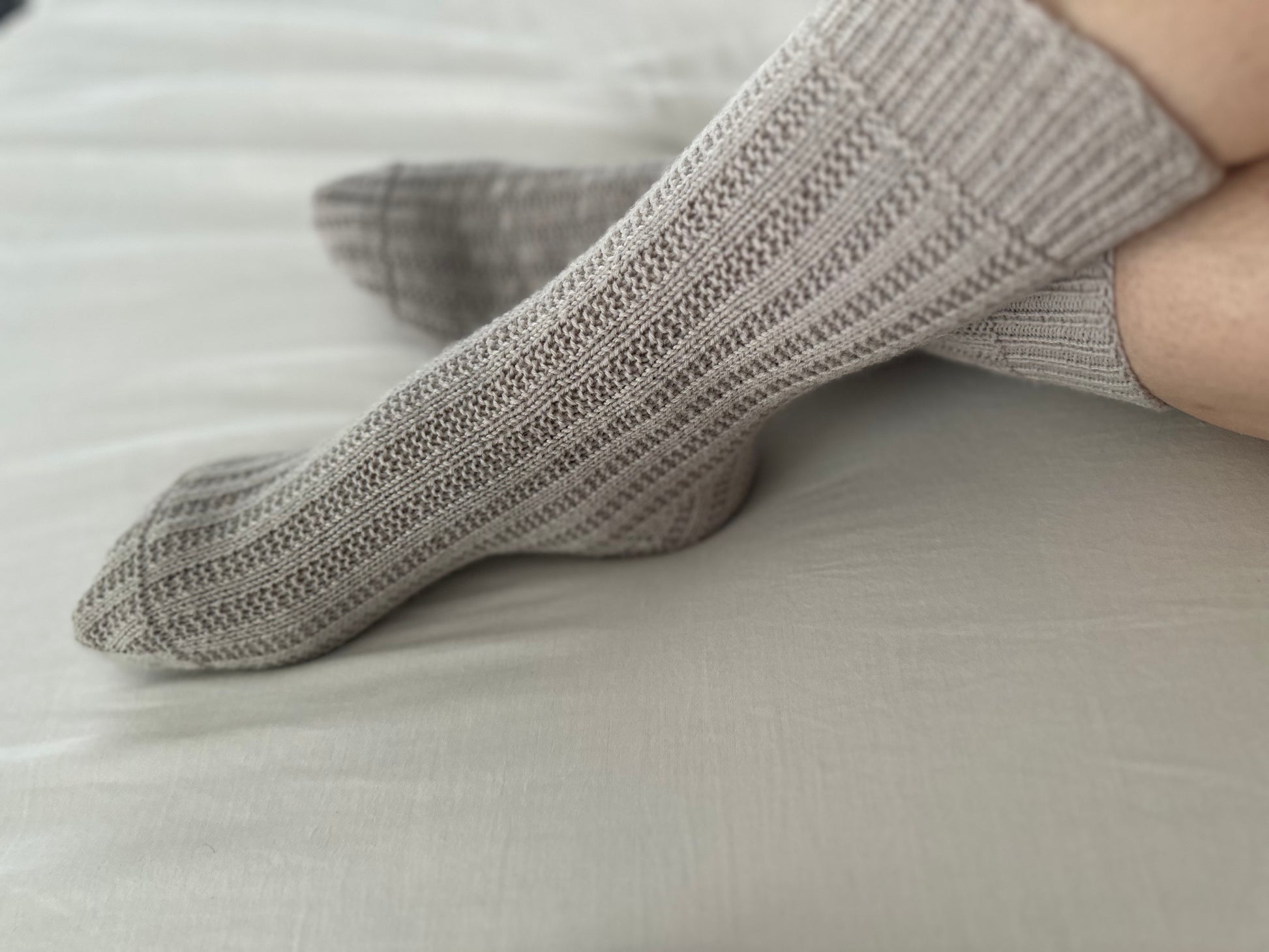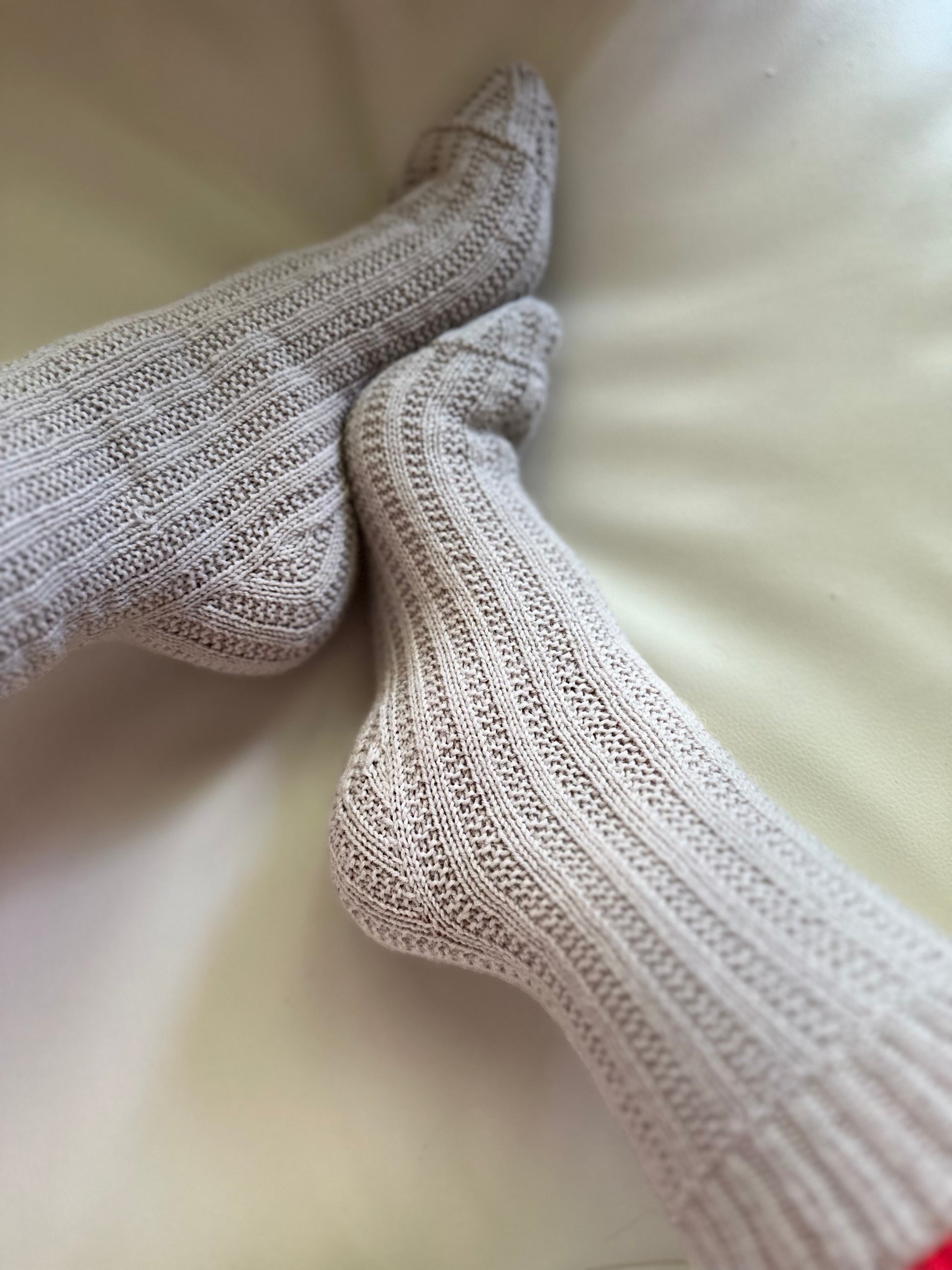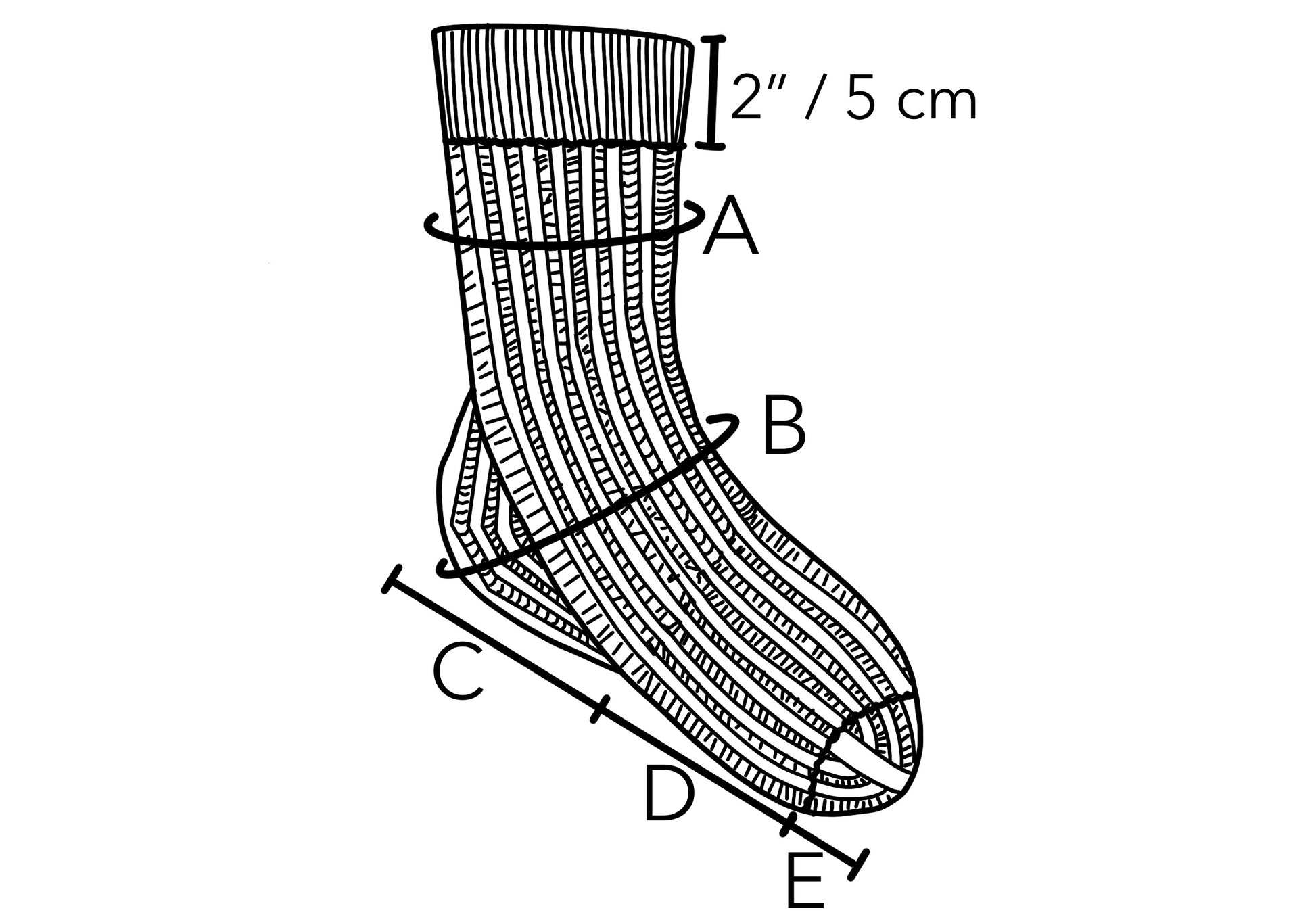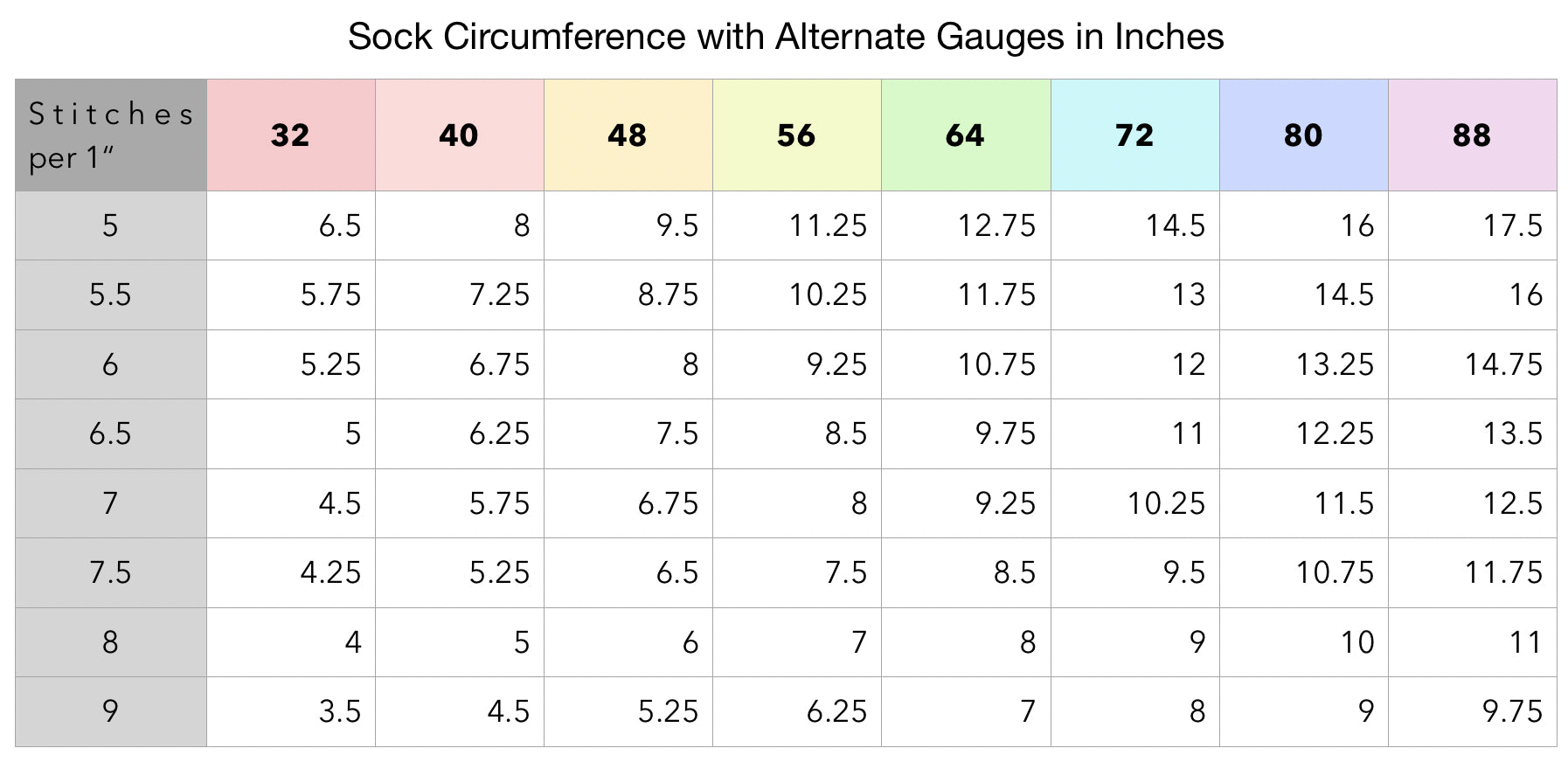Rib It Socks - Knitting Pattern
Rib It Socks - Knitting Pattern
Couldn't load pickup availability
Share
Say hello to your new favorite heel construction. All the fit benefits of a heel flap and gusset, but without needing to pick up stitches, and only a very small section worked flat. You’ll love knitting the Kite Heel, and how it looks.
Construction: The Rib It socks feature an all over garter ribbing pattern, with a seamlessly integrated Kite Heel. Worked cuff down, with a wedge toe.
Difficulty Level: Intermediate
This pattern has been professionally tech edited by Hannah Middleton, and has been test knitted.
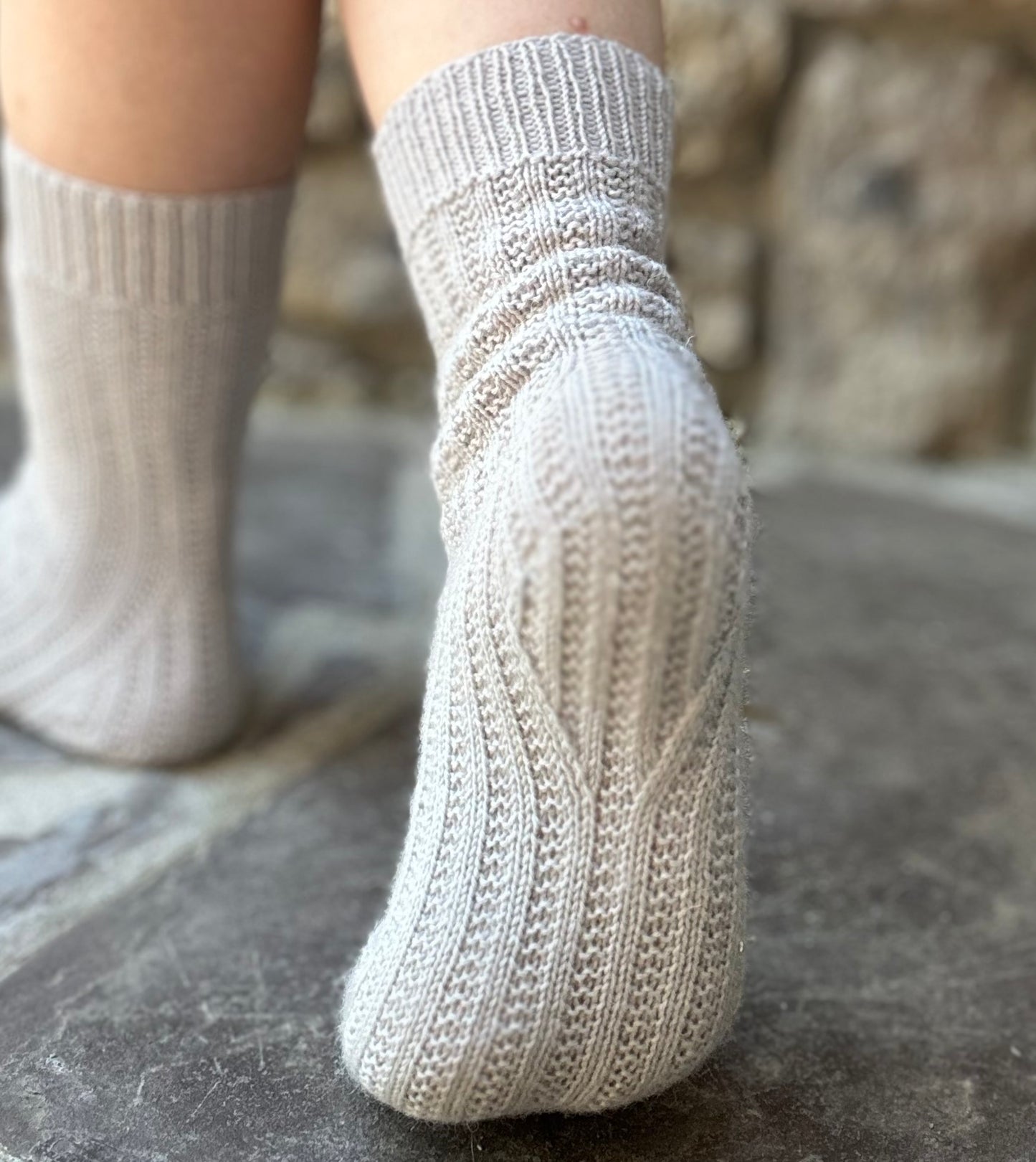
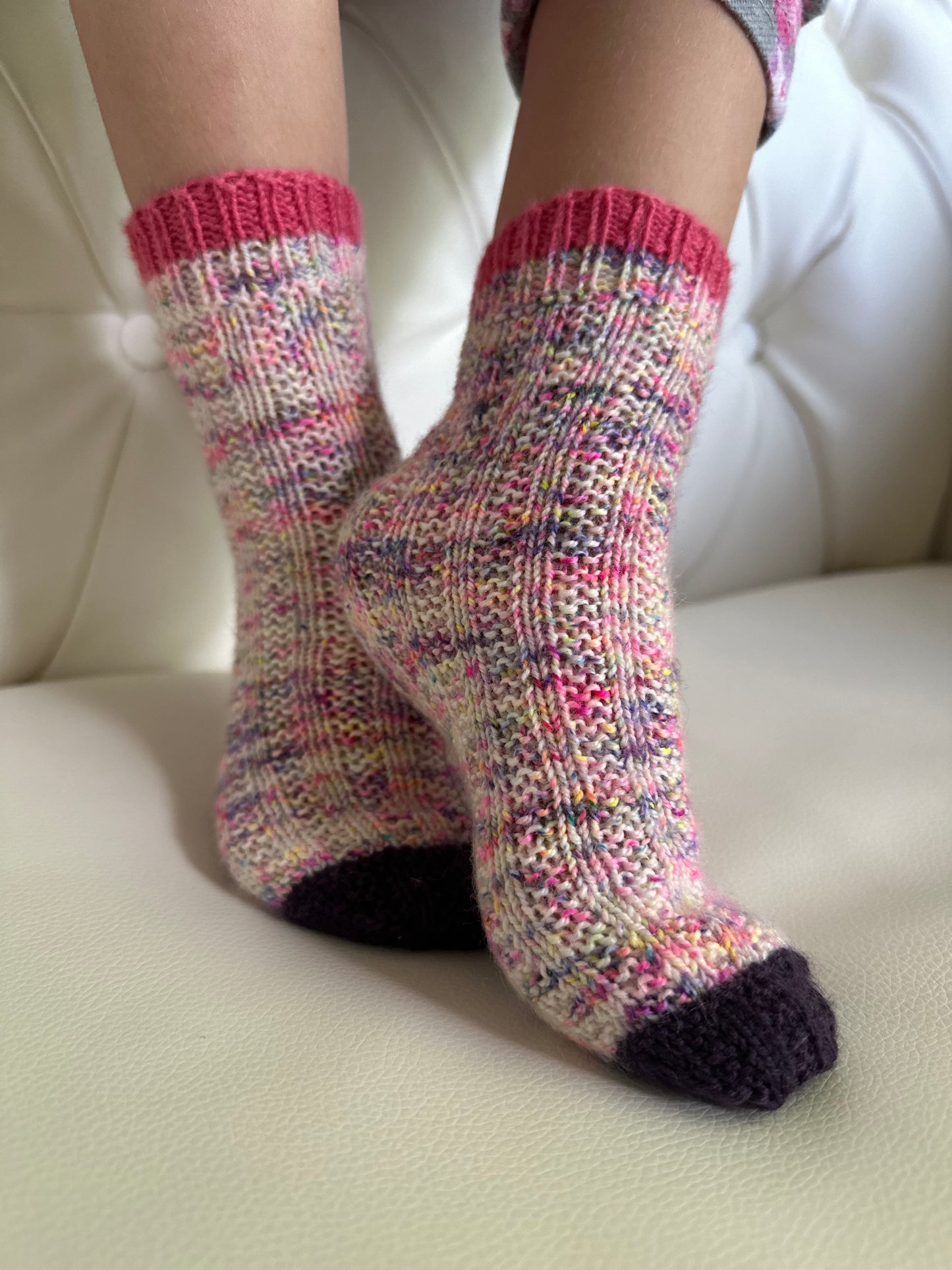
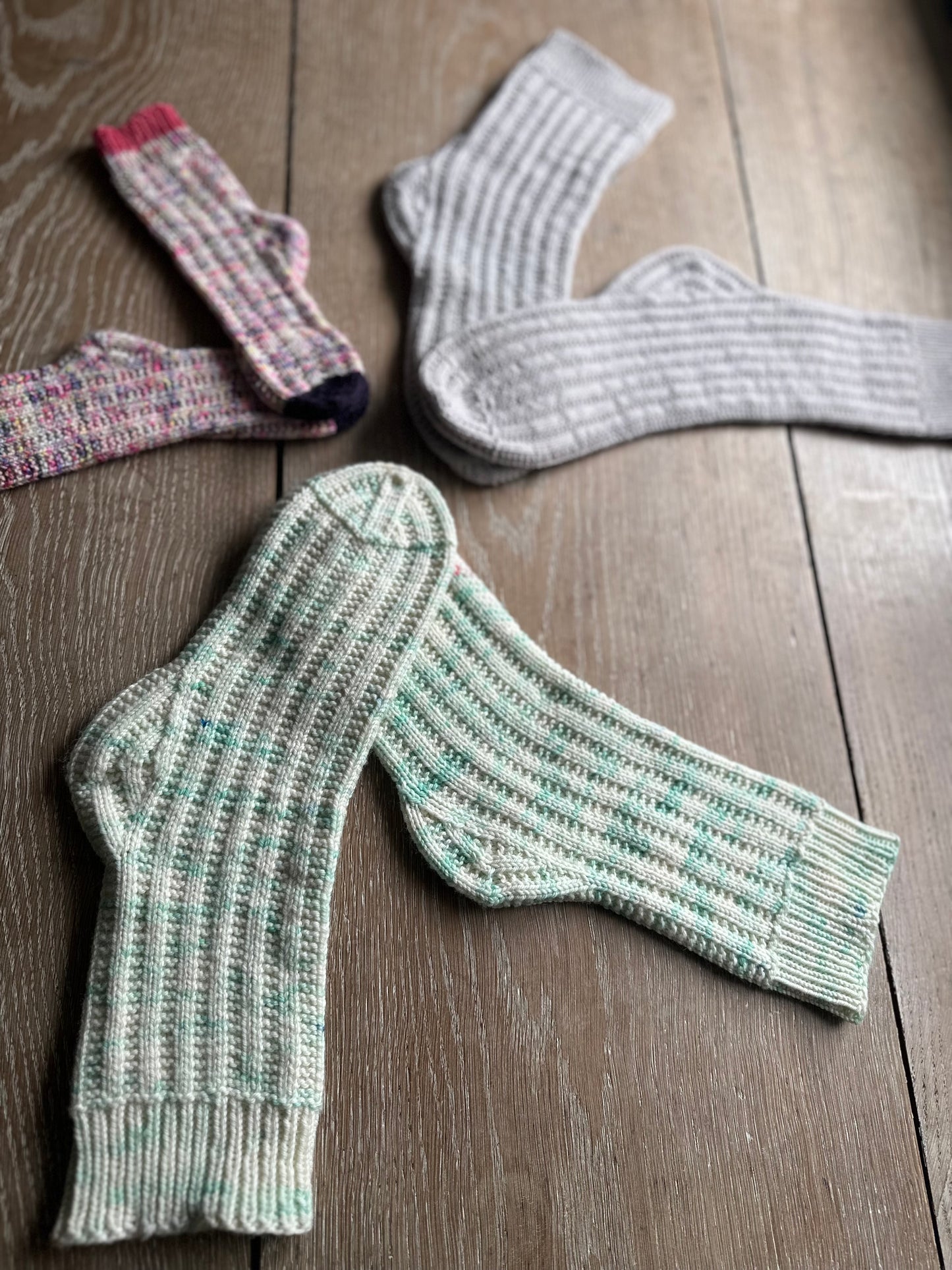
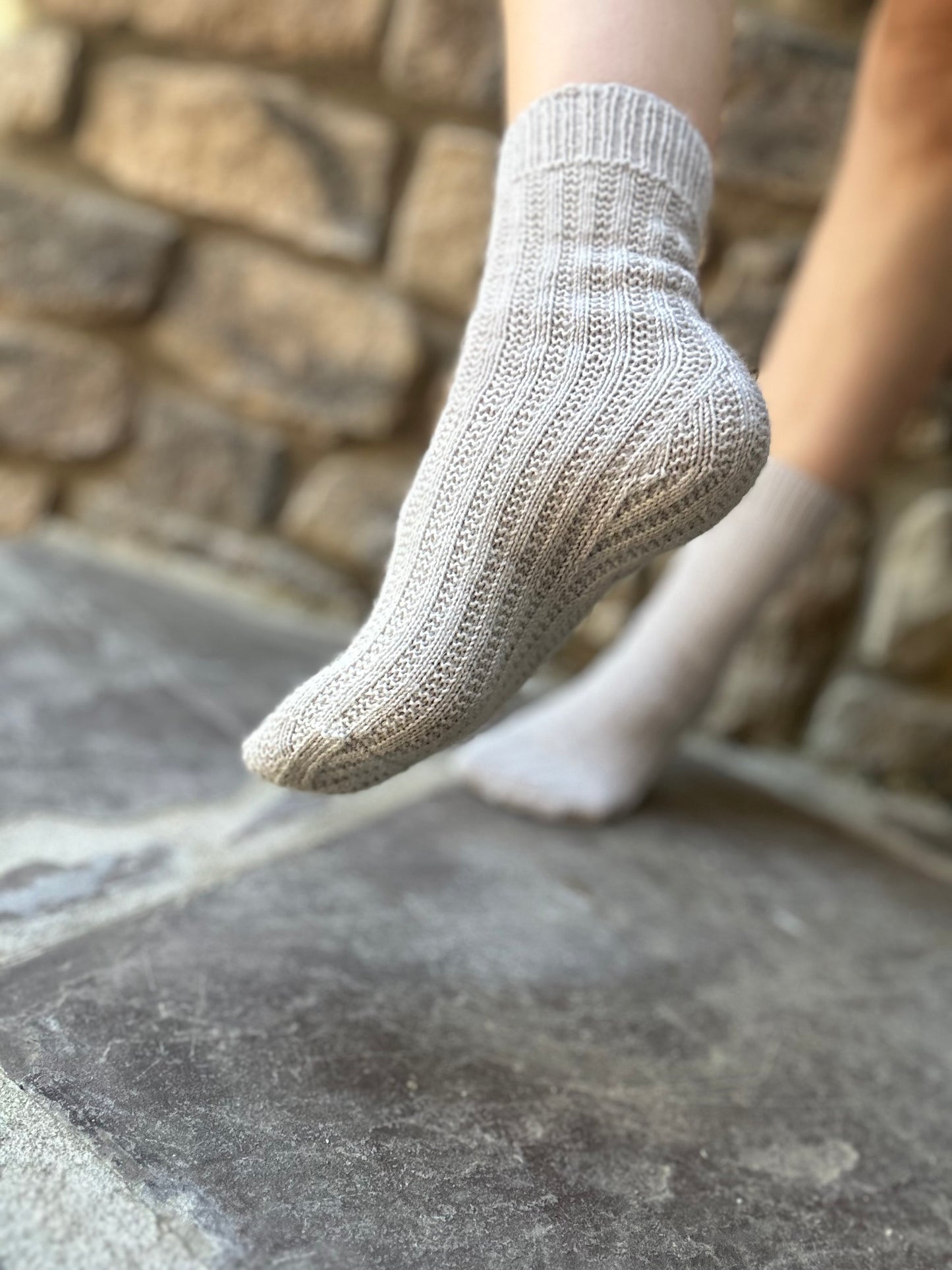
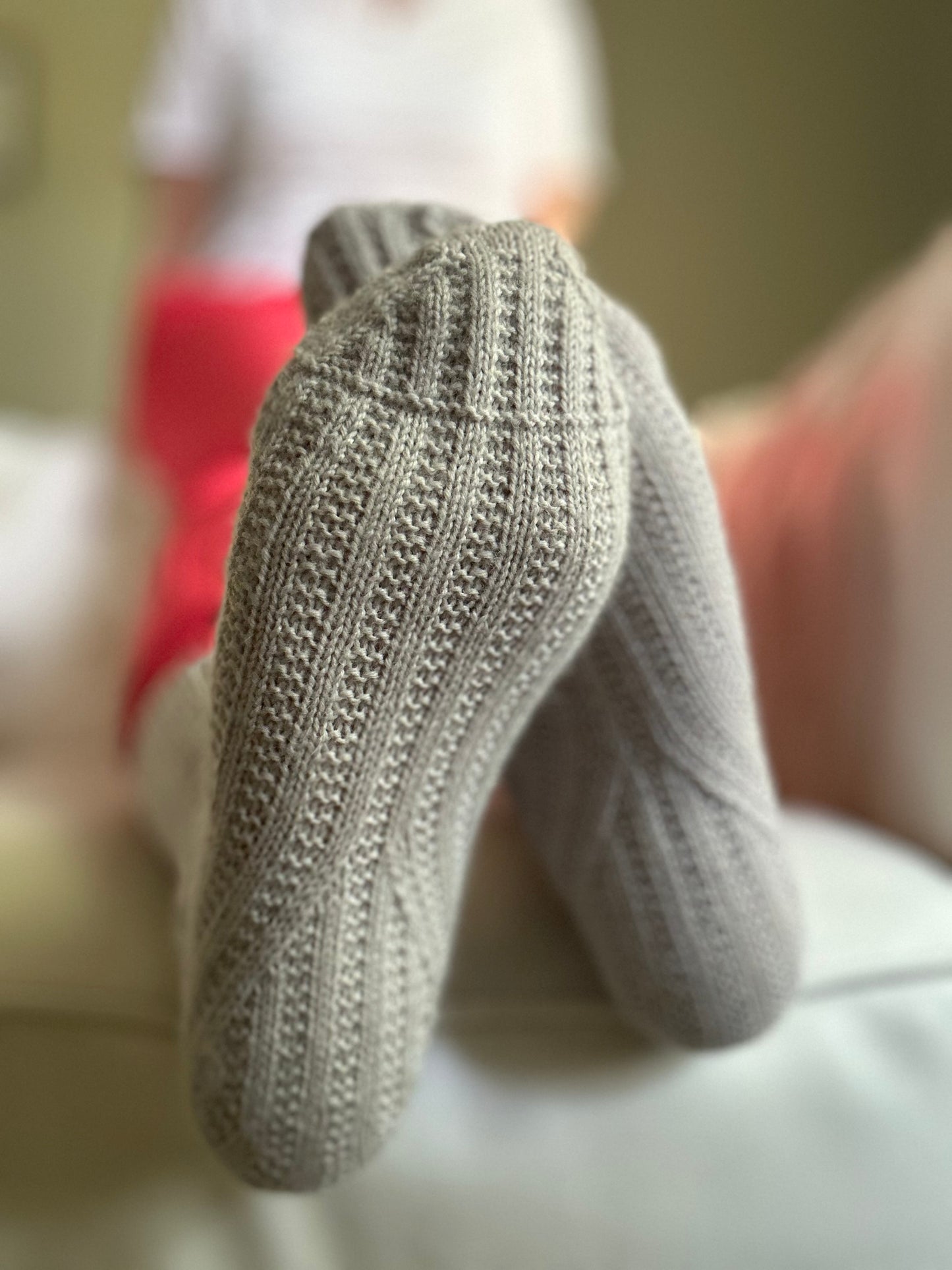
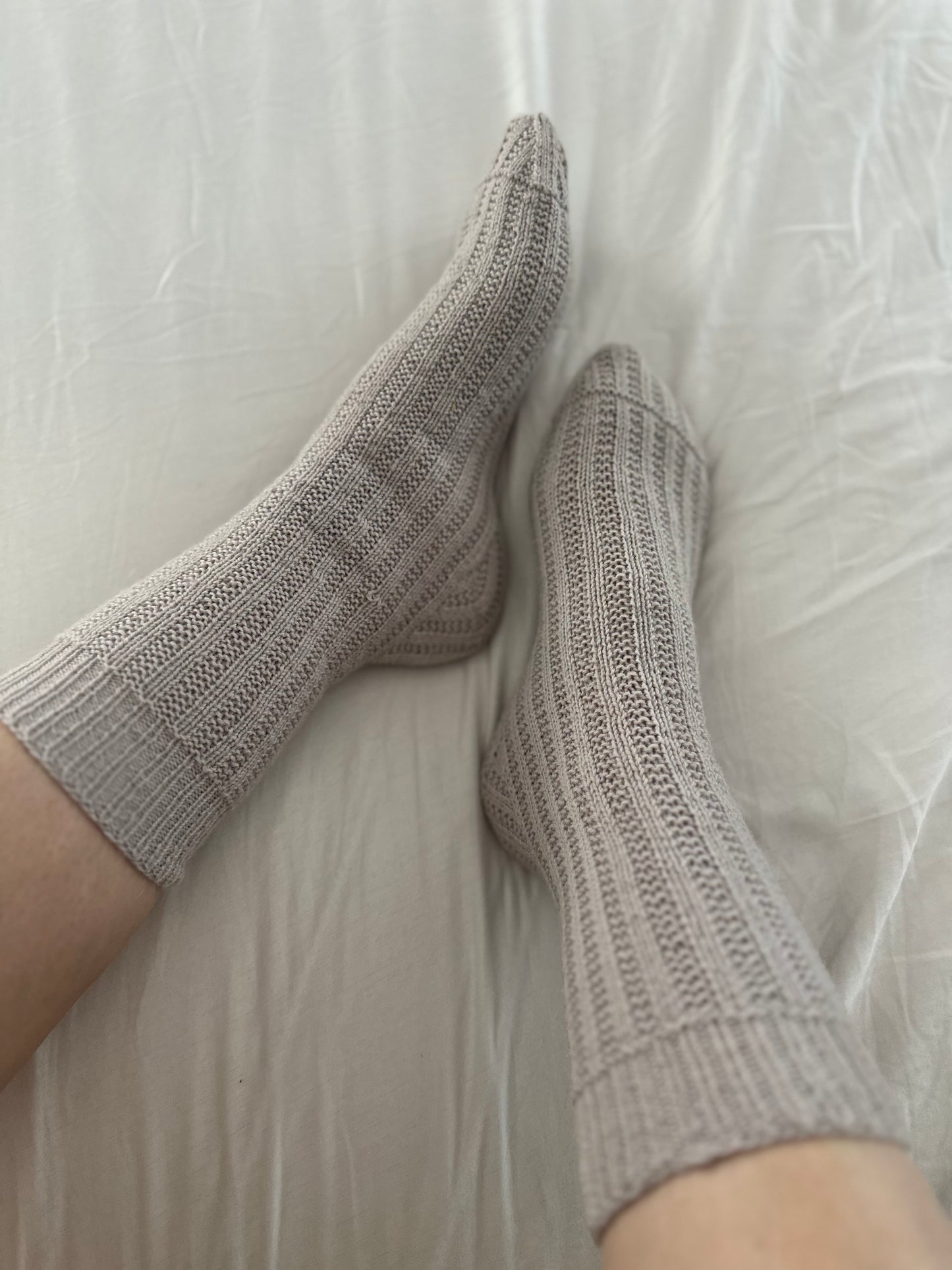
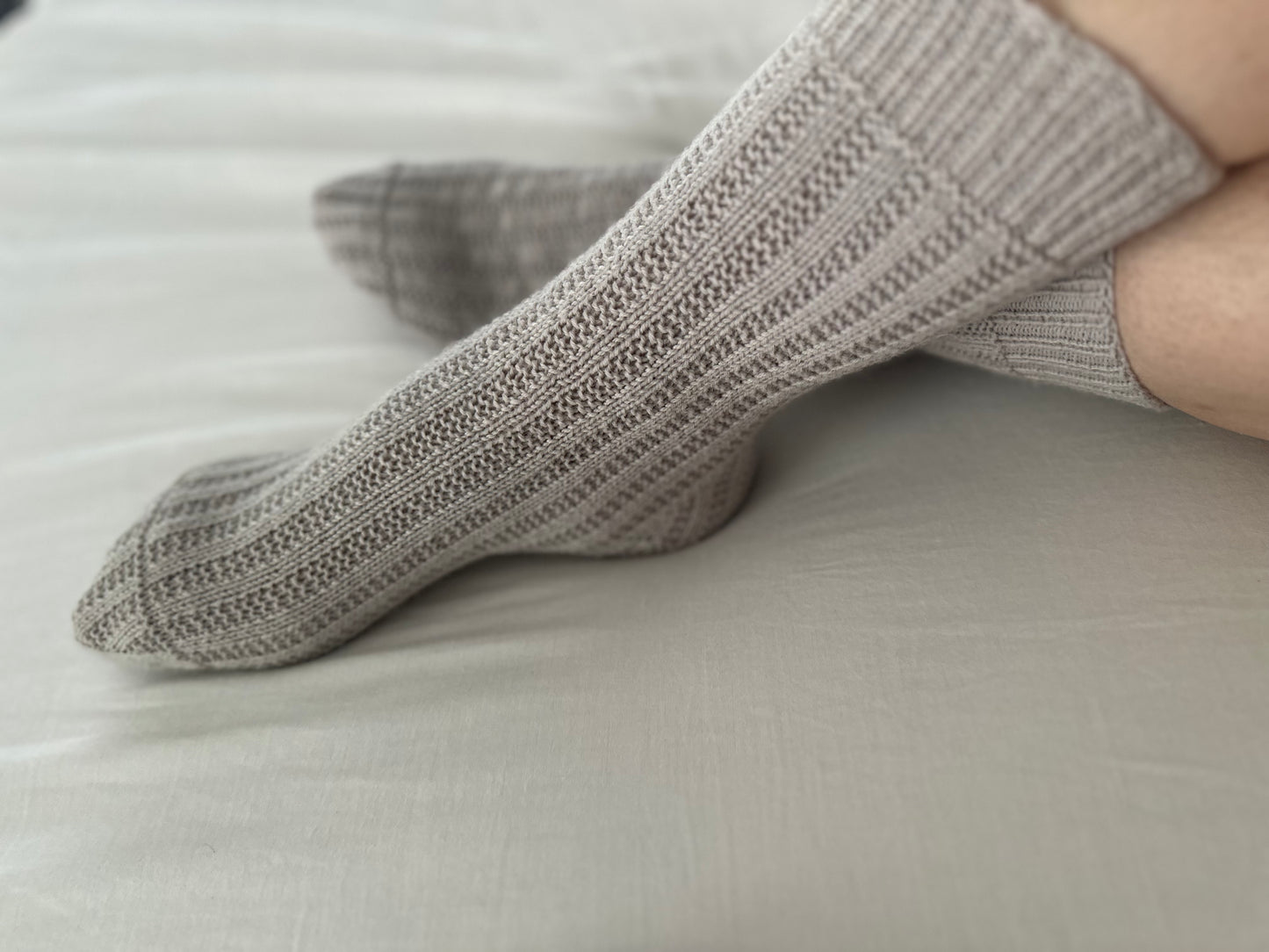
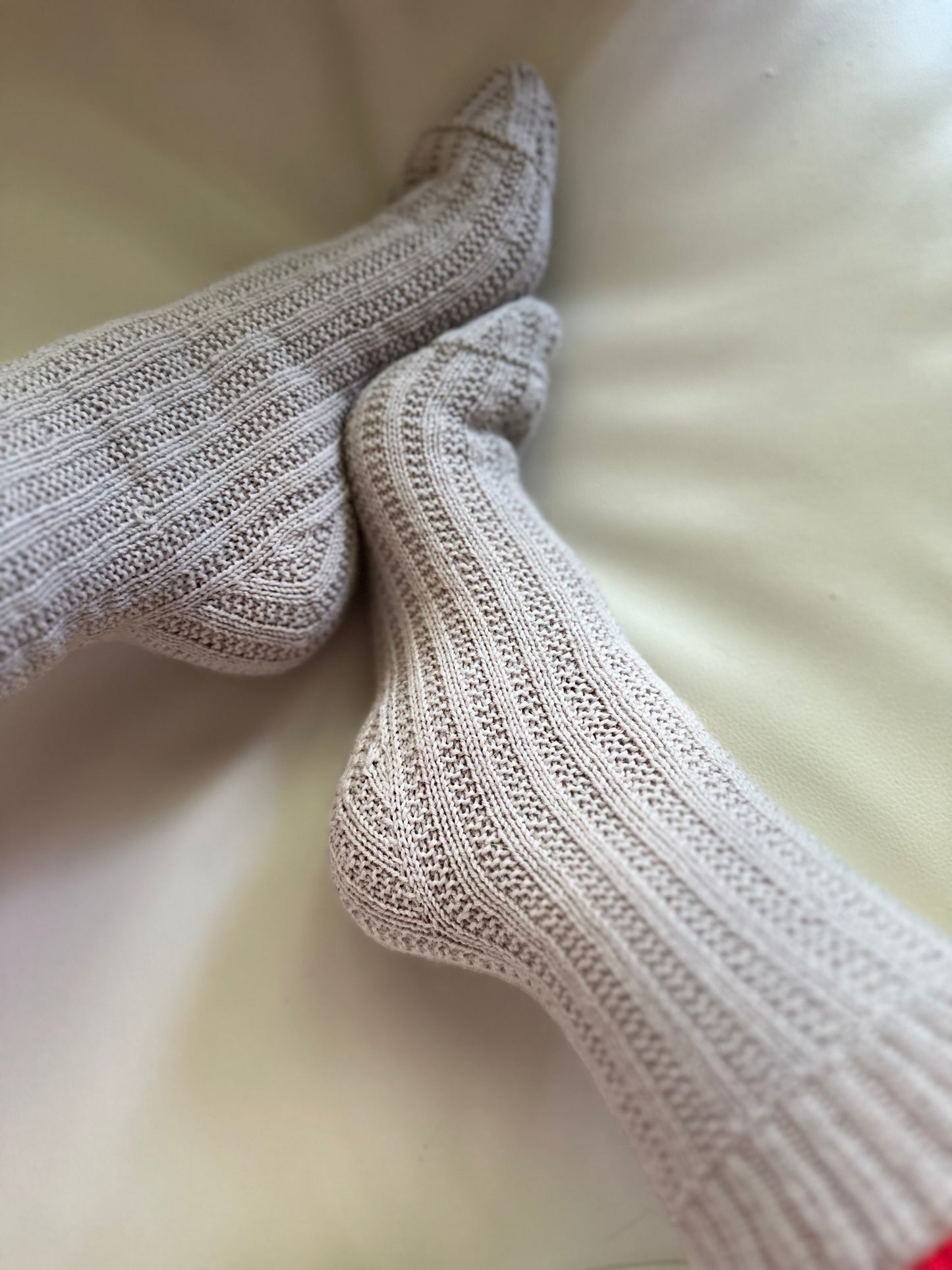
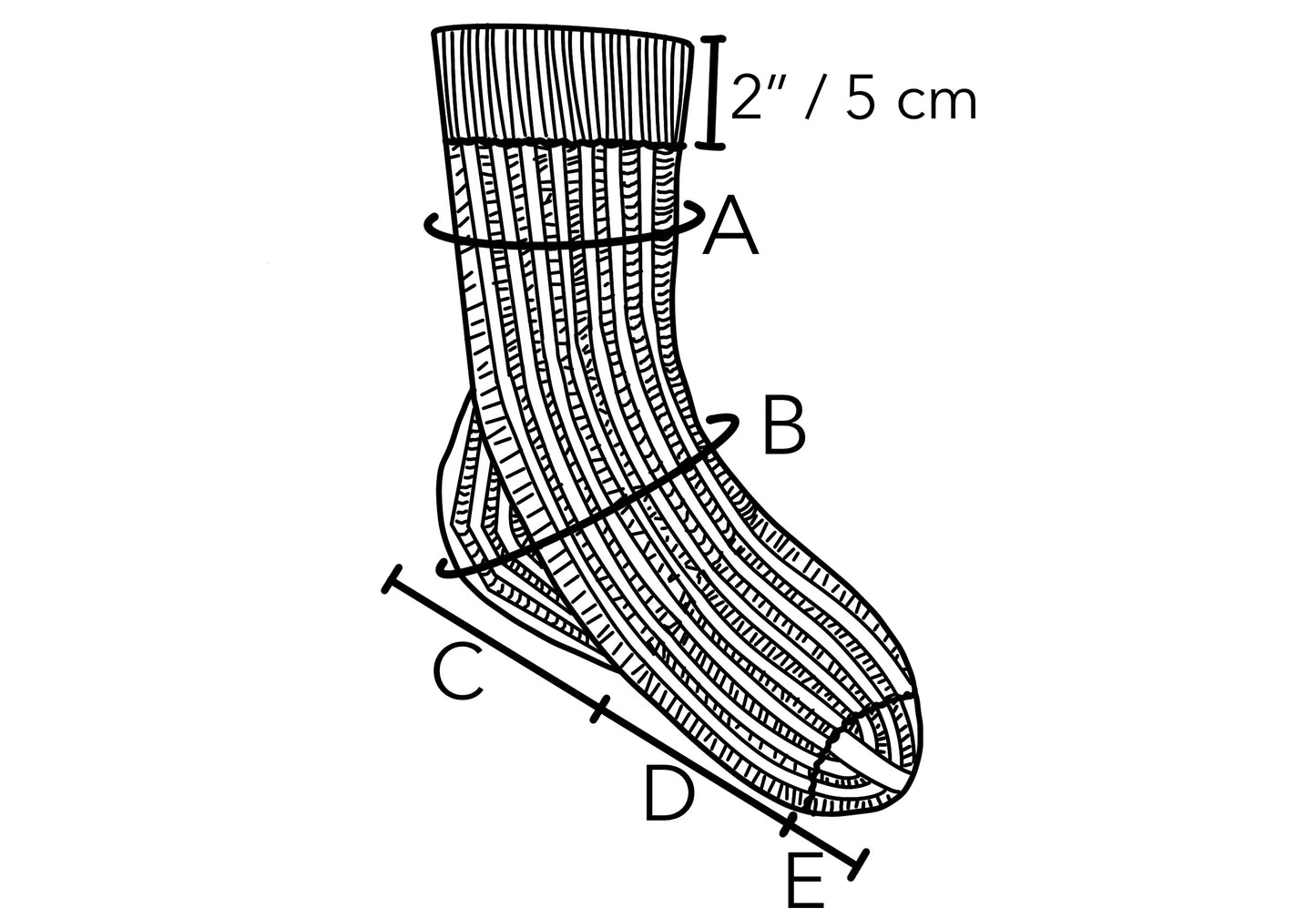

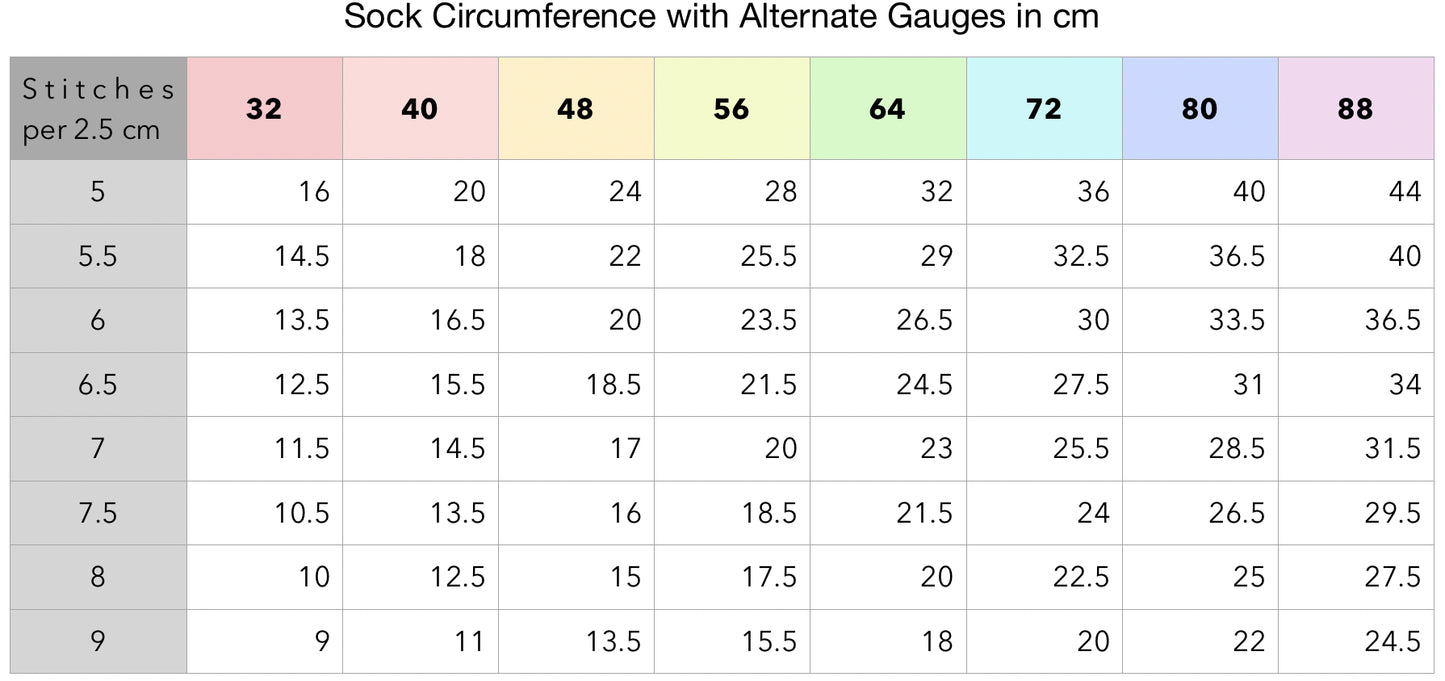

Details
Sizing
8 sizes: 32, 40, 48, (56, 64, 72) {80, 88} stitches
The socks are meant to be 10% smaller in circumference than your actual foot. Measure around the widest part of your foot, and multiply by .9 for the ideal sock circumference.
Choose the size closest to your ideal sock circumference. If between sizes, size down.
Finished Sock Circumference: 3.75”, 4.75”, 5.75”, (6.5”, 7.5”, 8.5”) {9.5” 10.25”} / 9.5 cm, 12 cm, 14 cm, (16.5 cm, 19 cm, 21 cm) {23.5 cm, 26 cm}
Please see the size chart and schematic in the photos for more details.
This pattern is written to work with a variety of gauges, so that you can use anything from fingering to light worsted weight yarn. Start by choosing your yarn and needle combination, then count your stitches per 1” / 2.5 cm. If it’s not 8.5 stitches, use the alternate gauge tables. Find your stitches per 1” / 2.5 cm in the grey column, follow that row across to see the sock circumference of each size at your gauge.
Choose the size closest to your ideal sock circumference.
Gauge
8.5 stitches in 1” / 2.5 cm, in garter ribbing, after blocking.
Pattern can be worked at different gauges.
Needles & Notions
US 1 / 2.25 mm small circular needles, or needles that give you a fabric you like with the yarn you’re using.
Pattern is written for small circulars, but can be adapted to Magic Loop or DPNs. I recommend using Magic Loop for the toes.
3 stitch markers, darning needle, scissors, a tape measure or sock ruler.
Yardage
The pattern is written in a fingering weight yarn gauge, but they can be knit in light fingering to light worsted weight yarn.
Grey Sample (64 sts, 8.5 sts per 1” / 2.5 cm): Katia United Socks 2, 2, 3, (4, 4, 5) {5, 6} skeins (109 yards / 100 meters per 25 g), 75% Wool, 25% Polyamide, in the color ‘7’.
OR 153, 180, 312, (351, 412, 467) {532, 577} yards / 141, 165, 286, (322, 378, 429) {488, 529} meters of comparable fingering weight yarn.
Teal+White Sample (56 sts, 7 sts per 1” / 2.5 cm): Mace of Skeins Spade DK 1, 1, 1, (1, 2, 2) {2, 2} skeins (245 yards / 224 meters per 100 g), 75% Wool, 25% Nylon, in the color ‘OOAK’.
OR 126, 156, 186, (213, 258, 297) {346, 379} yards / 115, 142, 170, (195, 236, 272) {316, 346} meters of comparable DK weight sock yarn.
Yardage needed will vary based on yarn chosen and gauge, as well as how long the leg and foot are knit. Estimates are based on standard foot lengths for given circumferences.
Techniques
German Twisted CO
German Short Rows
Grafting Toe Stitches
Small circumference knitting in the round
Directional lifted increases and directional decreases
Slipping stitches with yarn in back
Maintaining the stitch pattern while increasing and decreasing (or ability to read charts)
What’s Included
-Schematic
-Detailed sizing information
-Instructions for using alternate gauges
-Illustrated construction overview
-Links to video tutorials and special techniques
-Charts for the heel to help maintain the stitch pattern
-Heel modification guideline for higher or lower insteps
-Hyperlinks embedded in the pattern for easy navigation
Related Links
Check out what test knitters had to say, and their fabulous projects in this blog post:
Around the Table Yarns is hosting 3 part video class series for this pattern, find the recorded videos on their YouTube channel.
1. Sock Club July 2025: Rib It Socks. This video includes swatching information, choosing a size, a few modifications that can be made, and how to read the charts.
2. Sock Club August 2025: Rib It Socks. This video walks through how to use the heel charts, the heel instructions, and how to work the increases, decreases, and short rows described in the pattern.
3. Sock Club September 2025: Rib It Socks. This video talks about setting up for the toes and working the toes.

